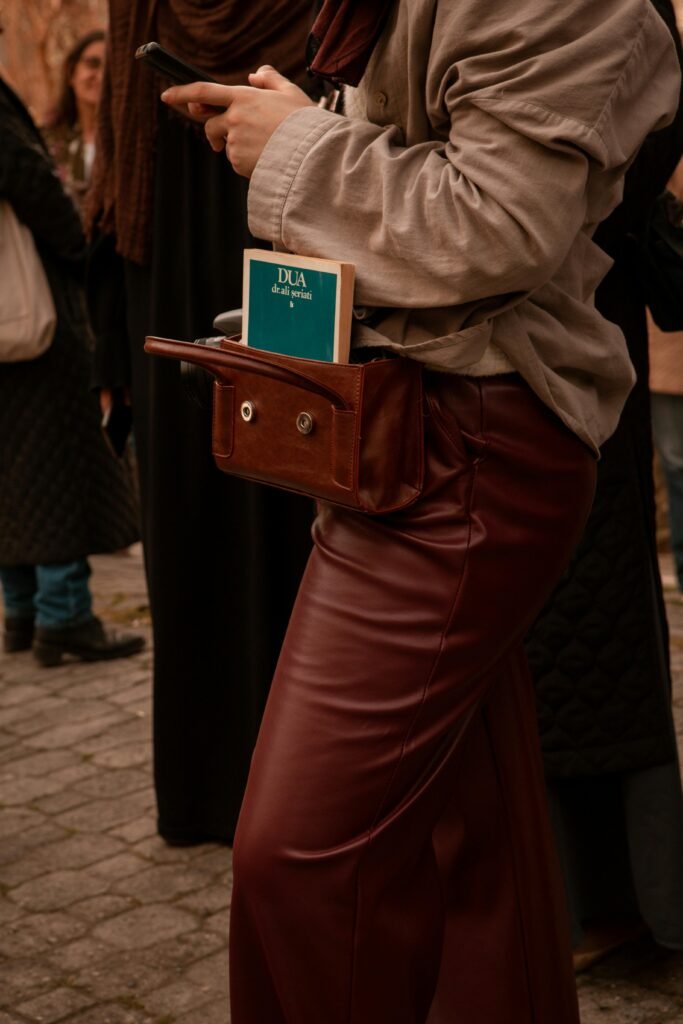If you’re looking for a smart way to invest your money, consider diving into the world of leather wallets. Not only are they functional and stylish, but they can also bring in impressive returns over time. In this article, we will explore the top tips for maximizing your investments in leather wallets. From selecting the right materials to identifying trends and brands, we’ll guide you through the process of making savvy purchases that will not only enhance your personal style but also grow your wealth. So, let’s delve into the world of leather wallets and discover the secrets to lucrative investments!

This image is property of images.pexels.com.
Researching popular leather wallet brands
When it comes to investing in a leather wallet, it’s important to start by researching popular brands in order to make an informed decision. One of the best ways to do this is by checking online reviews and ratings. By reading what other customers have to say about a brand and its products, you can get a sense of the quality and durability of their wallets. Look for brands that consistently receive positive feedback and have high ratings.
In addition to online reviews, it’s also essential to consider the brand reputation and history. Brands with a long-standing reputation for producing high-quality leather goods are more likely to provide a reliable and durable wallet. Look for brands that have been in the industry for many years and have built a strong reputation for themselves.
Lastly, don’t forget to look for certifications or awards received by the brand. Certifications and awards can serve as indications of quality and craftsmanship. For example, if a brand has received a certification for using ethically sourced leather or has won an award for their innovative designs, it can speak to their commitment to providing top-notch products.
Understanding the different types of leather used
Leather wallets are available in various types of leather, each with its own unique characteristics and qualities. Understanding these different types of leather will help you make a more informed decision when choosing a wallet as an investment.
One type of leather to consider is full-grain leather, which is considered to be the highest quality. Full-grain leather comes from the top layer of the hide and retains the natural markings and imperfections, giving it a unique and authentic look. It is known for its durability and ages beautifully over time, developing a rich patina.
Another option to explore is top-grain leather. This type of leather is also of high quality but has been sanded or buffed to remove imperfections. As a result, it may have a more uniform appearance compared to full-grain leather. However, it still offers durability and can withstand daily use.
If you’re looking for a more affordable option, consider genuine leather wallets. Genuine leather is made from layers of lower-quality leather that are bonded together. While it may not have the same durability and longevity as full-grain or top-grain leather, it can still provide a decent quality wallet at a more affordable price point.

This image is property of images.pexels.com.
Determining the appropriate wallet style for investment
Once you’ve narrowed down your options based on brands and leather types, it’s time to consider the appropriate wallet style for your investment. Wallet styles can vary greatly, so it’s important to choose one that suits your personal preferences and needs.
One classic option to consider is the bifold wallet. Bifold wallets fold in half and typically have multiple card slots and compartments for storing cash. They are a timeless and popular choice for many individuals due to their functionality and classic design.
For those who prefer a more minimalist and sleek look, slim wallets are worth exploring. Slim wallets are designed to hold essentials only, such as a few cards and some cash. They are perfect for individuals who value simplicity and want to avoid a bulky wallet.
If you often find yourself needing extra storage space, a trifold or travel wallet style may be more suitable. These wallets offer additional compartments and pockets, allowing you to carry more cards, cash, and even travel documents securely. Trifold wallets fold into thirds, while travel wallets may have specialized compartments for passports and boarding passes.
Considering the wallet’s functionality and features
In addition to considering the style of the wallet, it’s important to evaluate the functionality and features it offers. One key aspect to evaluate is the number of card slots. Take stock of how many cards you typically carry and ensure that the wallet you choose has enough slots to accommodate them all. Additionally, consider if you need any specialized slots for IDs or frequently used cards.
Beyond card slots, look for additional compartments or pockets that can help you stay organized. Some wallets may have designated cash compartments, coin pockets, or even a transparent ID window. These features can enhance the usability of the wallet and cater to your specific needs.
Another important consideration is RFID-blocking technology. With the prevalence of contactless payment methods, RFID-blocking wallets have become increasingly popular. These wallets are designed to protect your cards from unauthorized scanning and potential identity theft. If this is a concern for you, look for wallets that offer this additional security feature.

This image is property of images.pexels.com.
Examining the wallet’s craftsmanship and durability
When investing in a leather wallet, it’s crucial to assess its craftsmanship and durability. The quality of construction will determine how well the wallet withstands daily use and how long it lasts.
Start by inspecting the stitching and seams. Look for even and tight stitching, as this indicates quality craftsmanship. Loose or uneven stitching may suggest poor construction and a wallet that’s more likely to fall apart over time.
Next, check for quality hardware. The zippers, snaps, or buttons should be sturdy and durable. Pay attention to how smoothly they operate and if they show any signs of weakness. Quality hardware adds to the overall durability and longevity of the wallet.
Finally, assess the overall construction of the wallet. Examine the materials used for the lining and any reinforcements in high-stress areas. A well-constructed wallet will feature strong materials throughout, ensuring it can withstand the test of time.
Assessing the wallet’s resale value
Although your primary focus may be on the wallet’s utility and quality, it’s worth considering the potential resale value of your investment. While not every wallet will appreciate in value, specific factors can make a wallet more desirable in the second-hand market.
One aspect to consider is limited editions or collaborations. Wallets produced in limited quantities or as part of a collaboration with a well-known designer or brand often hold their value well. The exclusivity and uniqueness of these pieces make them sought after by collectors and enthusiasts.
Similarly, wallets from discontinued collections can also have higher resale value. As the supply dwindles, the demand for those particular designs may increase, allowing you to potentially sell the wallet at a higher price.
Lastly, evaluate the brand’s popularity and demand. Brands with a strong following and a high demand for their products generally retain their value better. Keep in mind that the overall desirability of the brand may fluctuate over time based on trends and market demand.
Comparing prices and budgeting for investment
As with any investment, it’s crucial to compare prices and budget accordingly when purchasing a leather wallet. Research wallet prices across different retailers to get an idea of the average cost for the specific brand and style you’re interested in. This will help you identify any price discrepancies and ensure you’re getting a fair deal.
When setting a budget, consider the long-term investment potential. Higher-quality wallets crafted from top-grain or full-grain leather may have a higher upfront cost but can prove to be a better investment in the long run due to their durability and resale value. Take into account your financial goals and the level of investment you’re comfortable with.
Remember, investing in a leather wallet is not only a financial decision but also a personal one. Ultimately, the key is to find a wallet that strikes a balance between quality, functionality, and affordability to meet your individual needs.
Taking care of your leather wallet investment
Once you’ve made your leather wallet investment, it’s essential to take proper care of it to maximize its lifespan and maintain its value. Here are a few tips to help you keep your wallet looking its best:
-
Clean and condition the leather regularly using suitable leather care products. This will help prevent the leather from drying out and cracking.
-
Avoid exposing the wallet to excessive heat or moisture. Extreme temperatures and high humidity can damage the leather and cause it to lose its shape or develop mold.
-
When not in use, store the wallet in a protective pouch or box. This will help protect it from potential scratches or other damage when stored with other items.
By following these simple care tips, you can ensure that your leather wallet investment remains in excellent condition for years to come.
Finding a reliable seller or retailer
To ensure you’re purchasing an authentic and high-quality leather wallet, it’s crucial to find a reliable seller or retailer. Here are a few tips to help you find a reputable source:
-
Shop directly from reputable brand stores whenever possible. Buying directly from the brand’s official store eliminates the risk of purchasing counterfeit or replica products.
-
If buying from third-party sellers, verify the authenticity of the product. Look for any certifications or guarantees that the seller may provide to ensure that you’re getting a genuine wallet.
-
Consider buying from trusted online marketplaces, but exercise caution. Read the seller’s reviews and ratings, and only purchase from sellers with a proven track record of delivering authentic products.
By being diligent in your search for a reliable seller or retailer, you can have peace of mind knowing that you’re buying a genuine leather wallet.
Understanding potential risks and challenges
As with any investment, there are always potential risks and challenges to consider when investing in leather wallets. Here are a few to keep in mind:
-
Fluctuations in market demand and trends can impact the resale value of the wallet. What may be popular and in high demand today may lose its appeal in the future. Consider this when making your purchasing decision.
-
Counterfeit or replica wallets are prevalent in the market. Be cautious when buying from unknown sellers or if the deal seems too good to be true. Always verify the authenticity of the product before making a purchase.
-
Certain wallet styles may have limited liquidity in the second-hand market. While popular and classic styles are generally more desirable, niche or unique designs may have a narrower market and may be more challenging to sell.
By understanding and acknowledging these potential risks and challenges, you can make a more informed decision and mitigate any potential negative impacts on your investment.
In conclusion, investing in a leather wallet can be a smart and practical choice if done correctly. By conducting thorough research, considering the brand, leather types, wallet style, functionality, craftsmanship, resale value, pricing, and finding a reliable seller, you can maximize your returns and enjoy a quality wallet that not only serves as a functional accessory but also holds its value over time. Remember to take care of your investment and be mindful of potential risks and challenges to ensure a successful and enjoyable leather wallet investment experience.
